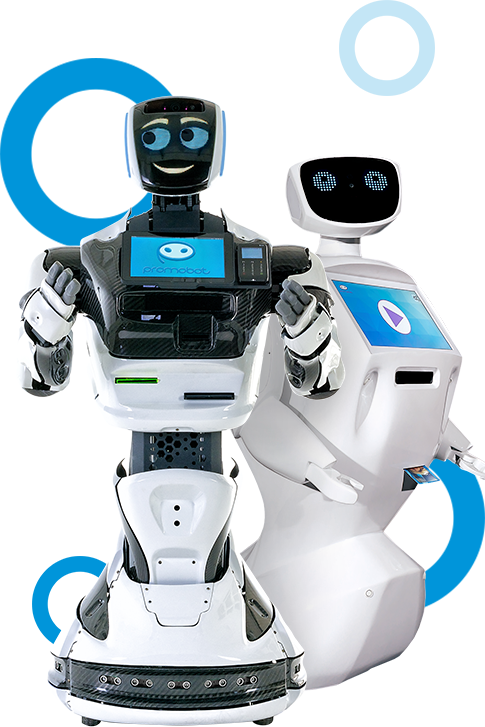During the COVID-19 pandemic, any contacts between people have to be limited. In these circumstances, robots assist people with various tasks, especially in the prevention of the virus.
Robots can help with disinfection indoors and outdoors and prevent further spread of the virus by diagnosing, serving, and in some cases even treating patients who have developed a disease.
Disinfection
A robot for disinfection was developed in China for outdoor disinfection of potentially dangerous public places. It can be controlled remotely and remain protected from potential exposure to the virus.
The robot itself is a mobile platform on chassis. A disinfectant storage container is installed onto it with a spraying mechanism doing the disinfection of the surfaces on its way.
Prevention
According to the WHO and other medical establishments, a set of rules has to be in place to stop the spread of the coronavirus.
This February, a Promobot robot was conducting a survey for people in New York. The robot would attract the attention of people and then ask five questions that could determine the initial symptoms of COVID-19. The robot would advise a doctor’s visit even if the symptoms appeared insignificant. Not too long ago, Promobot was used for the same purpose in Mexico ― to demonstrate the importance of early prevention of a coronavirus disease.
This isn’t the only solution developed by Promobot to combat the new threat. A Medical Assessor Robot is also used to measure blood sugar levels, take non-invasive blood tests, and measure lung capacity. It can be purchased from the company’s website.
Diagnostic
Another recent solution in the field of coronavirus prevention with robotics is a robot for throat swabs. This solution helps control the spread of the disease among medical workers.
The robot was developed by the Guangzhou Institute of Respiratory Health and the Shenyang Institute of Automation under the Chinese Academy of Sciences. It consists of a mechanical arm made by Universal Robots, a binocular endoscope, wireless transmission equipment, and an interaction terminal.
The mechanical arm operates the endoscope inside the human’s throat. The endoscope presents a high-resolution anatomical image in 3D. The robot is operated remotely and collects throat swabs quickly and painlessly.
Another robot from Xi’an Jiaotong University provides contactless body temperature measurement of multiple people. According to the developers, it is used to control the body temperature of people in public areas ― train stations, airports, hospitals, and other places.
Service
In Guangzhou, hospital robots are used to deliver food and medication to people infected with COVID-19. They collect medical waste and used sheets from patients. By using robots there are lesser chances of cross-contamination within the medical staff and more time to dedicate to immediate medical tasks.
Robots are developed specifically to do deliveries ― they can move and avoid collisions, open doors, and even use elevators. Their mapping system allows for precise navigation and a built-in patient database ensures every patient is taken care of.
Treatment
Finally, medical specialists and engineers from Chulalongkorn University in Bangkok developed robots for high-res communication between the doctor and the patient. These robots use 5G networks and minimize contact with carriers of the disease.
According to the developers, robots can be further equipped to measure body temperature and blood pressure, as well as EKG with immediate transfer of the results to the doctors.


